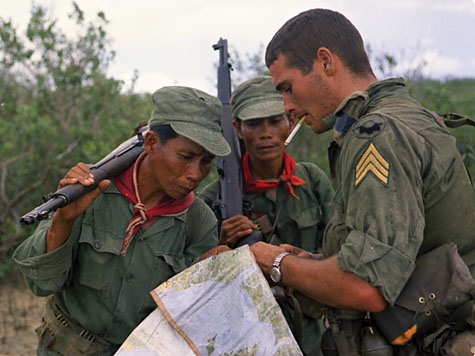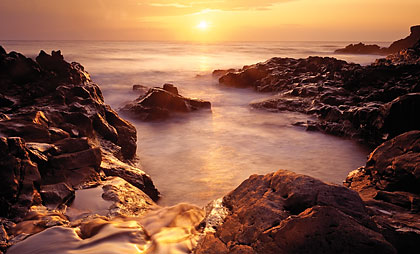 |
|||||||||||
|
November/December 2012 Coronado in the Forest of Assassins
BY JOHN PRADOS Many elements of the war came together in the Mekong Delta. It was South Vietnam’s rice basket and its most densely settled region. If the Delta went over to the National Liberation Front (or Viet Cong, as it was more commonly known), Saigon would lose its main export, face difficulties fielding its army, and perhaps worse, VC operations aimed at the seat of South Vietnamese power would multiply and become even more dangerous. The close-in defense of Saigon was complicated by the fact that swamps—integral parts of the Delta system—lay within miles of the city. The swampy region known as the Rung Sat, or the “Forest of Assassins,” had been a dangerous place long before the American war. Traditionally the province of pirates and hardscrabble ruffians, most of the area was accessible mainly by boat. During the French occupation the forces of the Binh Xuyen, a river pirate consortium counted among South Vietnam’s political-religious sects, had dominated the Rung Sat and used it as a base to extend its activities into Saigon. South Vietnamese leader Ngo Dinh Diem had ejected the Binh Xuyen from the city in 1955 and sent his army to pursue them into the swamps. While capturing some top Binh Xuyen commanders, the military operation had never completely subdued the denizens of the Forest of Assassins. However, it succeeded in alienating the Vietnamese of the Rung Sat, which became a fertile recruiting ground for the Viet Cong. By the mid-1960s, when the American war escalated, the region was a VC hotbed. The ARVN called the area the Rung Sat Special Zone. Seeking to flood South Vietnam with capable forces, the United States faced particular difficulties in the Rung Sat. Gen. William C. Westmoreland sent most of his ground forces into the Central Highlands, but still sought a way to fix the Delta. Although the U.S. Navy’s focus had been on blockading the coast to interdict enemy supplies and on its carrier operations on Yankee Station, it, too, became increasingly concerned about the Delta. Marine battalions serving afloat as contingency forces had been called upon to make amphibious landings in the Mekong. Something more permanent was required. At a September 1965 meeting in Saigon, MACV and the Navy agreed to ramp up the blockade and proposed riverine operations to supplement the half-dozen Vietnamese Navy river assault groups that were overextended in the vast Delta lands. Program approval came near the end of the year: “Game Warden” called for 120 river patrol boats (PBRs) to operate from fixed bases on the rivers and floating ones aboard converted Landing Ship Tanks (LSTs). That provided additional mobility, since the LST bases themselves could be moved. Navy attack helicopters would furnish dedicated aerial support. The river patrol boats would cruise the Mekong and Bassac rivers, canals, and other waterways to suppress VC sampan traffic. A third of the force would be aimed specifically at the Rung Sat. Game Warden went active in May 1966. Soon enough it became evident that the operational concept still lacked sufficient punch. With the Vietnamese river assault groups—as with the French ones of the previous war—troop units were assigned to strengthen the riverine forces’ intervention capability. In February 1966, before the PBRs even took to the water, MACV and the Navy decided to double the number of boats and augment the naval component with ground troops in a new Mobile Riverine Force. Navy SEALs were assigned to carry out special missions. But the main ground element became the 9th Infantry Division, which was then preparing for deployment to South Vietnam. A brigade of this division would serve as the Mekong Delta Mobile Afloat Force, while the others deployed ashore. River Assault Flotilla One, the naval component of what soon became Task Force 117, began training at Coronado, California, in September 1966. Its first boats reached South Vietnam four months later, followed in April and May by supporting LSTs and sixty-eight medium landing craft. In early June the Riverine Assault Force became operational at Dong Tam, west of My Tho. Its initial mission was aimed at the Forest of Assassins.
Along with other 2nd Brigade soldiers, Charlie Company boarded troop trains for the West Coast in early January. A Salvation Army Band played for them as they boarded in the middle of a fierce blizzard. Advance parties of the 9th Infantry Division began landing in South Vietnam in January 1967. The 3rd Battalion, 60th Infantry, was the first to come to Dong Tam, a made-up place name selected by Westmoreland and South Vietnamese commander Cao Van Vien. The name meant “unite hearts and minds.” GIs laid out the base while naval support teams dredged the river for an anchorage. One dredging barge was lost when it scooped up live ammunition which exploded. While the 3/60 bedded down at Dong Tam, a mechanized battalion took over the airfield at Tan Hiep, a few kilometers northeast of My Tho. These were 3rd Brigade units. The 2nd Brigade followed. Gen. George C. O’Connor commanded the division. He moved his 3rd Brigade up to Long An province. The 2nd Brigade, the troop component of the Mobile Riverine Force, moved aboard four reconfigured LSTs. The brigade first sent patrols into the Rung Sat during February. By April, River Assault Squadron 9 had arrived at Dong Tam. For weeks while construction continued, two thirds of the troops were tied down on perimeter security. Typically, only one battalion plus a company or two were available for familiarization exercises with the river assault groups. Riverine warfare techniques evolved slowly While the troops made ready, their commander, Col. William B. Fulton, his intelligence staff, Navy Capt. Wade C. Wells commanding Task Force 117, and province senior adviser Col. John E. Lance built a better picture of the enemy. SEAL platoons were among the best intelligence collectors. More data came from the South Vietnamese IV Corps command. Not far from Go Cong the Viet Cong had created its Binh Xuan Secret Zone to support the Rung Sat and Long An province. In Dinh Tuong province there was a VC base area plus the “20/7 Heartland Zone.” The Parrot’s Beak area of Cambodia, where there were North Vietnamese regulars in addition to the guerrillas, was also close by. The notorious Base Area 367 lay astride the border just about forty miles away. The Rung Sat formed part of the adversary’s 2nd Military Region, which had four local or VC main force battalions in the area. The Mobile Riverine Force aimed to move into the Rung Sat with the first phase of Coronado. The Navy called this “Concordia I.” Col. Fulton made a start by establishing a fire support base, X-Ray, at an old French site the men dubbed “Fort Courage” at the confluence of the Vam Co and Nha Be rivers. After some forays elsewhere in Long An, the MRF moved overnight into Can Giuoc district in the heart of the Forest of Assassins. The action took place not far from the village of Ap Bac, made notorious in a 1963 battle. A South Vietnamese infantry battalion simultaneously took up a blocking position. Early on the morning of June 19 Fulton flung five companies of the 3rd and 4th Battalions, 47th Infantry into the sweep. This was to be a “hammer and anvil” operation. Despite careful preparations and a blackout maintained among the eighty boats of the assault flotilla, the South Vietnamese, apparently warned by a village chief, reported a VC unit taking position right next to them. It was the enemy’s 5th Nha Be Battalion. Fulton ordered Lt. Col. Guy I. Tutwiler, leading the 4/47, to reorient the advance, and also committed his reserve company, C/3/47, which was inserted by chopper near the ARVN, and started moving north to meet the sweep force coming from Can Giuoc. Simultaneously Lt. Cmdr. Charles L. (“Chuck”) Horowitz put ashore the landing force. There was no opposition. Horowitz’s boats began to cruise the waterways, watching the GIs ashore to apply firepower when needed. Horowitz was watching Capt. Robert Reeves’s A Company of 4/47 emerge from a tree line, speculating on how nothing was happening. Suddenly several GIs crumpled to the ground. Mike Lethcoe, walking point for the 2nd Platoon, realized they were in a trap when he encountered a massive improvised explosive device crafted from a 55-gallon oil drum. He looked up and saw what he swore were hundreds of eyes staring at him. Cmdr. Horowitz’s three “monitors”—heavily armed landing craft converted into gunboats—and other assault boats opened heavy fire. But Alpha Company was stuck in a paddy with the enemy on two sides. It was a bad situation, made worse when the MRF’s boat-mounted 105mm howitzers, another tactical innovation, fired short and began dropping rounds among the riverine craft. Reeves’s company suffered 75 percent casualties. The VC 5th Battalion was determined. Those soldiers had previously been driven from their home province by U.S. sweeps. This time they wanted to make a stand. The Viet Cong had actually played possum earlier when other GIs passed close by, opting to wait for a better target. They got their wish: A ten-man scout team that the boats had dropped off was completely wiped out. Lt. Col. Tutwiler had no idea how bad the L-shaped ambush was, but he quickly ordered in B Company to help. Meanwhile, based on Fulton’s instructions, C Company on the opposite flank re-boarded its boats and was carried down Ben Via Creek to land near the battle site. Capt. Herbert Lind had just taken over, replacing an officer who had trained and led the company ever since Fort Riley but had resigned his commission to save his failing marriage. This was Lind’s first action. The company itself had been patrolling the Rung Sat since April. Andrew Wiest, who has chronicled the story of C Company in his excellent book, The Boys of Company C, recounts that Larry Lilley of the 1st Platoon noticed that the stream they were next to made a sweep to the left, which meant the landing boats with 4th Platoon aboard were going to snake out ahead of the ground troops as soon as they made the turn. He tried to get the boats’ attention to warn them, then grabbed the radio, but just as he keyed his handset the VC opened up. Two boats were caught just dozens of feet from the enemy, whose arsenal included several .50-caliber machineguns. The casualties included Lilley’s high school buddy Kenny Frakes, who died of his wounds. Frantic calls for support brought strikes from F-100 jets, but the enemy fire seemed unaffected. A pair of medevac choppers was shot out of the sky. Then boats came—not to pull out the embattled GIs but to land them on the enemy side of the creek. A fierce firefight erupted. At nightfall Col. Fulton began preparations to resume the fight at daybreak. But with the dawn it became evident the Viet Cong soldiers had gone. Fulton reported 50 dead and 150 wounded from Tutwiler’s battalion. (Actual losses in the after-action reports were lower: 38 killed and 101 wounded.) Charlie Company had 10 dead and 40 wounded. Alpha had been 80 percent destroyed. Viet Cong losses had been high as well—256 by the body count imagined that night and repeated in the later reports, 170 by the Army’s official history. Coronado had kicked off with a bang.
After its sacrifices in the Forest of Assassins the Mobile Riverine Force was ordered to clean out the Binh Xuan Secret Zone. No ARVN had entered that sector in eight months and the status of the VC 514th Battalion was not known. American planners suspected that the Viet Cong had reached some private accommodation with Saigon government officials. Col. Fulton and Capt. Wells shuttled forces through the area for several days in early July. Meanwhile, South Vietnamese troops became more active in the Can Giuoc area. Over three weeks the combined effort wiped out an estimated 250 Viet Cong and captured a hundred suspects. A document taken during these operations revealed that the enemy’s Military Region 2 had ordered its four battalions to join together to mount a coordinated operation. One of the units was detected crossing the river west of My Tho into the enemy’s 20/7 Heartland Zone. Over the course of a week beginning in mid-July the Viet Cong cut Highway 4 in nearly a dozen places. The highway, which wound from Saigon down to Quan Long in the Ca Mau peninsula—Vietnam’s southern tip—was the only major road that connected the South Vietnamese capital with the southernmost provinces. Gen. Westmoreland decided on Coronado II, a major operation that would encompass the riverine force as well as the 3rd Brigade of O’Connor’s division, units of the 1st Brigade, 25th “Tropic Lightning” Division, three helicopter battalions, and several South Vietnamese infantry and marine battalions. Coronado II launched on July 28. Both of Col. Fulton’s 47th Regiment rifle battalions landed at dawn on July 29 on the My Tho riverbank between Dong Tam and Cai Be. There was sporadic contact, the worst of it in the late afternoon when one of the assault boats was damaged by B-40 rockets, wounding more than two dozen sailors or grunts of C/3/47. The South Vietnamese marine brigade and Tropic Lightning reinforcements crowded into Dong Tam base and blocked the eastern edge of the VC zone. Gunship helicopters shot up the enemy where they found them—but for the most part the Viet Cong evaded contact. Gen. O’Connor decided that the enemy was withdrawing to the west. Col. Bui Yho Lan, the Vietnamese marine commander, volunteered to go after them. South Vietnamese marines were inserted by chopper near Ban Long the next day.
Gen. O’Connor ordered Col. Fulton to organize the pursuit. He arranged for unengaged MRF boats to patrol the river from My Tho to Sa Dec and borrowed thirty additional craft from Task Force 116 (“Game Warden”) to strengthen the blockade. The ARVN 44th Rangers and some South Vietnamese armored cavalry made a new contact, assisted by 25th Division GIs. Fulton completed his cordon by re-inserting his 47th Regiment MRF grunts and landing another 25th Division battalion, the 3/39 Infantry. Within the cordon South Vietnamese police questioned suspects and detained 400 of them. Eighty-three admitted to being members of the 263rd Main Force VC Battalion. Two hundred were claimed killed. Vietnamese marine losses were 44 killed and 115 wounded, American casualties totaled 10 dead and 65 wounded. For Coronado III in August the riverine force returned to the Rung Sat. Fulton’s 47th Regiment battalions were recuperating and regaining their health. They were replaced in the landing force by the 3rd Battalion, 60th Infantry. Capt. Wells and Col. Fulton created a floating base offshore of X-Ray so GIs could intervene quickly rather than make the long run in from Dong Tam. The grunts of 3/60 often captured munitions and sometimes found the VC. Probably the fiercest fight came on August 20 northwest of Ben Luc in company with 3rd Battalion, 47th Infantry. The reconnaissance in force developed into a contact. GIs later counted thirty-four bodies of the VC 506th Local Force Battalion. There were other encounters with Viet Cong formations, but the units were smaller and the firefights nothing like the one in June.
Meanwhile, the Viet Cong rebuilt its forces in the 20/7 Heartland Zone. The enemy battalion smashed in July was active again by September. Intelligence figured there were two more available within a day’s march. Coronado V went back after those enemy, starting on September 12. Fulton had been promoted to brigadier general and kicked upstairs to become assistant commander of the 9th Division. Col. Burt A. David replaced him. David sent his troops into battle. A sharp fight the first day gave way to sparse contacts, but evidence of a Viet Cong presence developed, and on the 15th there was another engagement with the enemy’s 263rd Battalion, which disappeared after sunset. The MRF claimed 79 VC killed (this figure, from the official history, differs from the Army’s official report on riverine warfare, which lists 213 enemy KIA) against losses of 7 dead and 123 wounded. More than 60 percent of them were sailors hit lightly during the river assaults who were back on the line within a week. South Vietnamese losses were 9 dead and 23 wounded. Now the Mobile Riverine Force began living up to its name, ranging far wider than the Rung Sat and Dinh Tuong province. Kien Hoa province, including Ben Tre district, became the locale for more Coronado V operations. Task Force 117 moved up to Vung Tau for Coronado VI. Then it was back to the Forest of the Assassins for Coronado VII and VIII, the latter involving fresh troops of the Royal Thai Regiment, a recently arrived allied force. II Field Force credited Coronado VII with providing security for Vietnamese civilians voting in the elections for the National Assembly, which took place in September. In November 1967 Task Force 117 returned to Dong Tam and conducted Coronado IX in Dinh Tuong. The targets were again the 263rd and 514th VC Battalions. In December the force was moved to Vinh Long province. Soon enough came the Tet Offensive, which imposed new demands on the river warriors. The last of the Coronado series operations was carried out to help disengage Can Tho in February 1968. The Mekong was its own theater of war with its own tempo and a different blend of the classic elements of Vietnam War fighting. Basing troops afloat for intervention on the land was novel, and the scale of the Mobile Riverine Force went beyond anything the South Vietnamese—or the French before them—had been capable of. II Field Force, in its operational report on lessons learned, which covered the fall of 1967, commented that the Coronado operations enabled the forces to “develop and refine techniques of riverine warfare.” There were grumbles from MACV, where a study group recommended that the Mobile Riverine Force be disbanded due to its large number of non-combat losses and the better cost-effectiveness of land-based troops. But Gen. Westmoreland nixed that recommendation. He focused on the assessed casualty ratio of fifteen enemy for every friendly loss, and saw the Mobile Riverine Force as his tool to exert an American presence in the Mekong. Westy later wrote: “The Riverine Force quickly proved its worth.” He viewed the reduced frequency and intensity of riverine battles as a sign of success in the Delta war. In late 1968, he reorganized the single river brigade into a pair of mobile riverine forces, Alpha and Bravo. The war had moved beyond Coronado.
|
|||||||||||
| |
|||||||||||
|
|||||||||||
8719 Colesville Road, Suite 100, Silver Spring. MD 20910 | www.vva.org | contact us |
|||||||||||









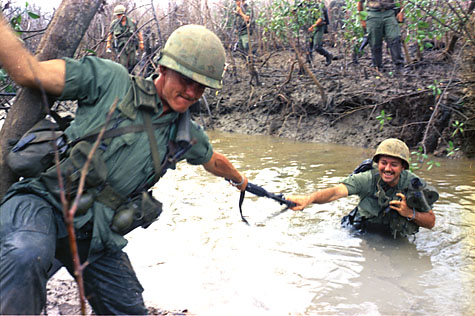
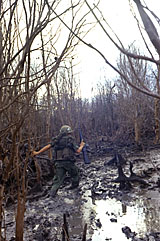 The 9th Division had been reactivated especially for Vietnam. It mustered at Fort Riley, Kansas, under Gen. George Eckhardt. The 9th consisted overwhelmingly of draftees fresh from Basic Training. For example, Charlie Company of the 4th Battalion, 47th Infantry, contained but a single volunteer. Charlie Co. began AIT in August 1966, moved up to company-, then battalion-, then brigade-level exercises, and the men got their pre-deployment leave before Christmas.
The 9th Division had been reactivated especially for Vietnam. It mustered at Fort Riley, Kansas, under Gen. George Eckhardt. The 9th consisted overwhelmingly of draftees fresh from Basic Training. For example, Charlie Company of the 4th Battalion, 47th Infantry, contained but a single volunteer. Charlie Co. began AIT in August 1966, moved up to company-, then battalion-, then brigade-level exercises, and the men got their pre-deployment leave before Christmas. 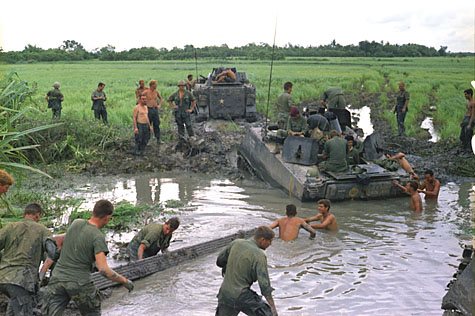
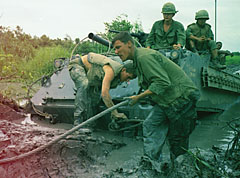 There was a firefight almost immediately. The 3rd Vietnamese Marine Battalion made a night attack. O’Connor asked the Tropic Lightning to commit two battalions to seal off the position. Reluctantly, he was obliged to temporarily recall the MRF infantry because a very high proportion of the grunts had been afflicted with paddy foot. O’Connor wanted both 47th Regiment battalions available again for July 31. The Viet Cong launched a desperate counterattack on the South Vietnamese marines during the predawn hours. VC troops had orders to hide their weapons and disperse if the attack did not succeed, which is what happened. After first light helicopters began reporting small groups of purported Vietnamese civilians making their way toward the river.
There was a firefight almost immediately. The 3rd Vietnamese Marine Battalion made a night attack. O’Connor asked the Tropic Lightning to commit two battalions to seal off the position. Reluctantly, he was obliged to temporarily recall the MRF infantry because a very high proportion of the grunts had been afflicted with paddy foot. O’Connor wanted both 47th Regiment battalions available again for July 31. The Viet Cong launched a desperate counterattack on the South Vietnamese marines during the predawn hours. VC troops had orders to hide their weapons and disperse if the attack did not succeed, which is what happened. After first light helicopters began reporting small groups of purported Vietnamese civilians making their way toward the river.